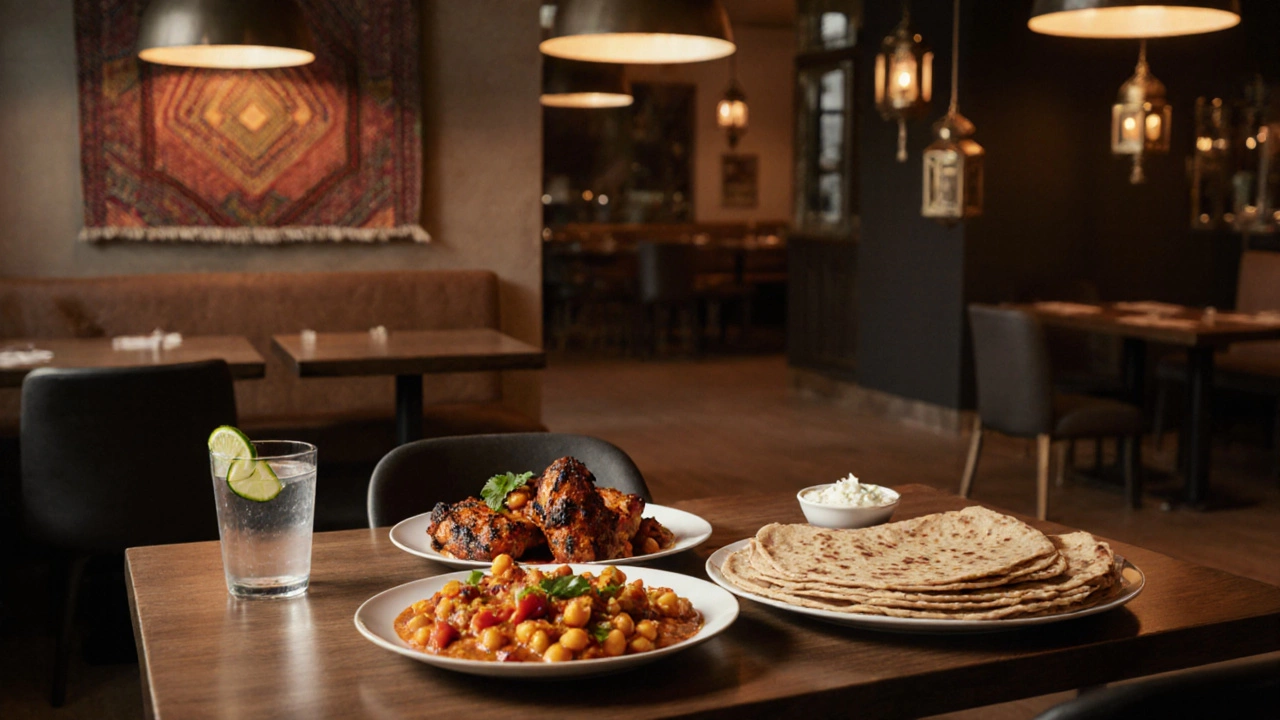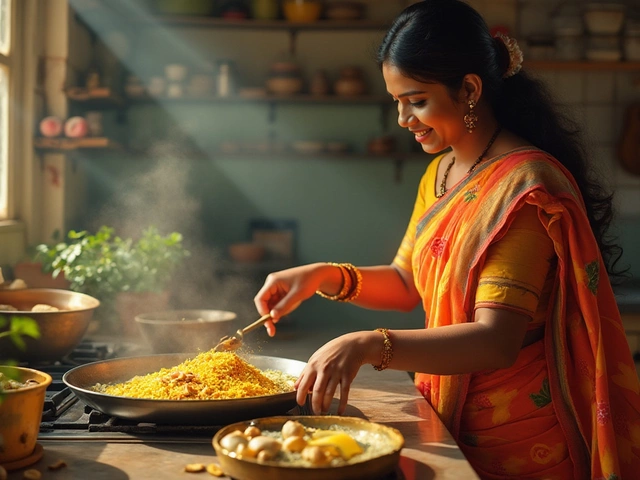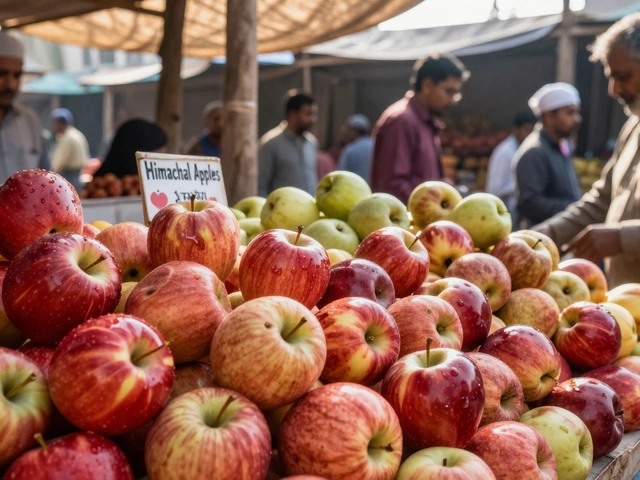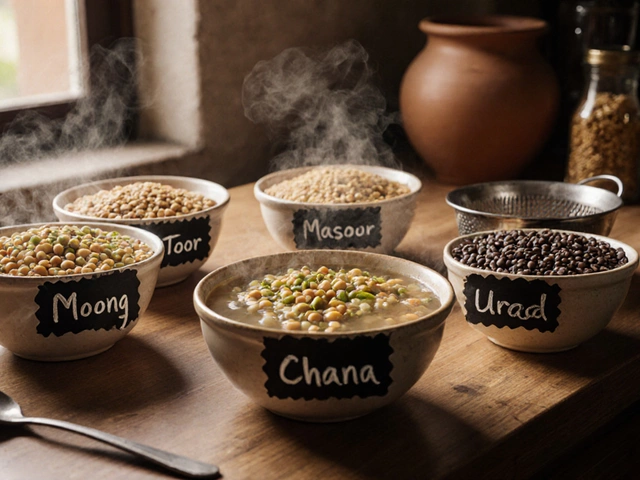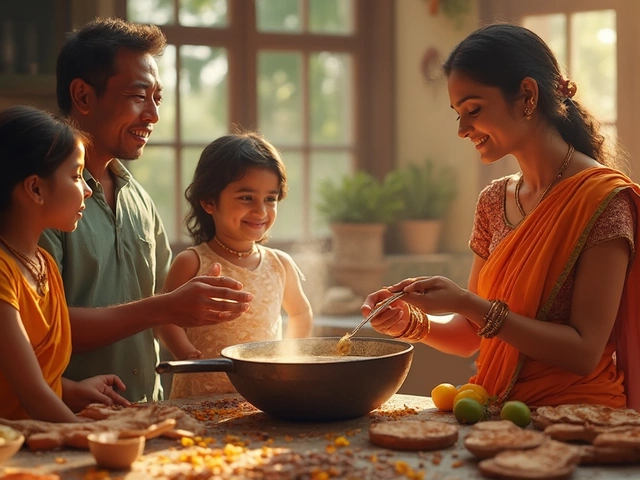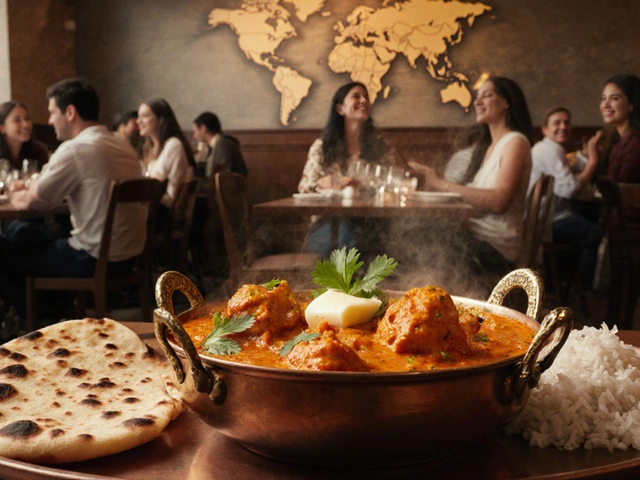Healthy Indian Meal Planner
Select your dishes from the top 5 healthy options, calculate total nutrition, and see if your meal meets healthy criteria.
Choose Your Dishes
Tandoori Chicken
Chana Masala
Palak Paneer (light)
Vegetable Biryani (brown rice)
Lentil Dal (Moong)
Your Meal Plan
If you’re hunting for the healthy Indian dish that’s both tasty and nutritious, you’re in the right place. Whether you’re dining out in Cape Town, Johannesburg, or any city with an Indian restaurant, you can enjoy flavors without wrecking your diet. Below we break down how to spot a truly wholesome option, list the top five choices, and give you practical tips to stay on track.
How to judge the healthiness of an Indian menu item
Indian cuisine is incredibly diverse, so a few simple criteria help separate the light from the heavy:
- Calorie count: Aim for dishes under 500 kcal per serving.
- Macronutrient balance: Look for high protein, moderate carbs, low saturated fat.
- Cooking method: Grilled, baked, steamed, or simmered dishes beat deep‑fried fare.
- Ingredient quality: Whole‑grain bases (brown rice, whole‑wheat roti), plenty of veggies, and lean proteins win points.
- Sodium & sugar: Choose dishes with minimal added salt or sweeteners.
When a menu description mentions “tandoori,” “grilled,” “steamed,” or “light sauce,” you’re likely on the right track.
Top 5 healthiest Indian dishes to order
These dishes consistently meet the criteria above, are widely available, and still pack the bold flavors you expect from Indian cooking.
1. Tandoori Chicken
Tandoori Chicken is a grilled chicken preparation marinated in yogurt, lemon juice, and a blend of spices such as cumin, coriander, and paprika. The yogurt helps tenderize the meat while adding a dose of calcium. Because it’s cooked in a high‑heat tandoor oven, the fat drips away, keeping the dish under 300 kcal per 100 g and delivering roughly 27 g of protein.
2. Chana Masala
Chana Masala is a hearty chickpea stew simmered with tomatoes, onions, ginger, garlic, and a medley of spices like garam masala and turmeric. Chickpeas provide plant‑based protein and soluble fiber, which can help lower cholesterol. A standard portion contains about 350 kcal, 12 g of protein, and 8 g of fiber.
3. Palak Paneer (light version)
Palak Paneer is a spinach‑based curry with cubes of cottage‑style paneer, cooked in a light tomato‑onion gravy. Opt for the "light" version where the sauce uses minimal cream and extra olive oil. Spinach adds iron and vitamin K, while paneer contributes calcium and protein. Roughly 400 kcal per serving with 15 g of protein.
4. Vegetable Biryani (brown rice)
Vegetable Biryani is a fragrant rice dish cooked with mixed vegetables, aromatic spices, and saffron, traditionally made with basmati rice. Swap white basmati for brown rice to boost fiber and keep the glycemic index lower. A typical plate stays under 450 kcal, offers 10 g of protein, and supplies a solid 6 g of fiber.
5. Lentil Dal (Mung or Moong Dal)
Lentil Dal is a simple, simmered stew of split yellow or green lentils mixed with turmeric, cumin, and a tempering of mustard seeds and curry leaves. Lentils are low‑fat, high‑protein legumes. A bowl of moong dal has roughly 250 kcal, 12 g of protein, and 8 g of fiber, making it an ideal companion to a whole‑wheat roti.
Comparison table - nutrition snapshot
| Dish | Calories | Protein (g) | Fiber (g) | Key Health Highlights |
|---|---|---|---|---|
| Tandoori Chicken | 300 | 27 | 2 | High protein, low fat, calcium from yogurt |
| Chana Masala | 350 | 12 | 8 | Plant protein, soluble fiber, antioxidants from tomatoes |
| Palak Paneer (light) | 400 | 15 | 4 | Iron‑rich spinach, calcium‑rich paneer, reduced saturated fat |
| Vegetable Biryani (brown rice) | 440 | 10 | 6 | Whole‑grain carbs, mixed veggies, low sodium |
| Lentil Dal (Moong) | 250 | 12 | 8 | Low‑fat protein, high fiber, easy digestion |
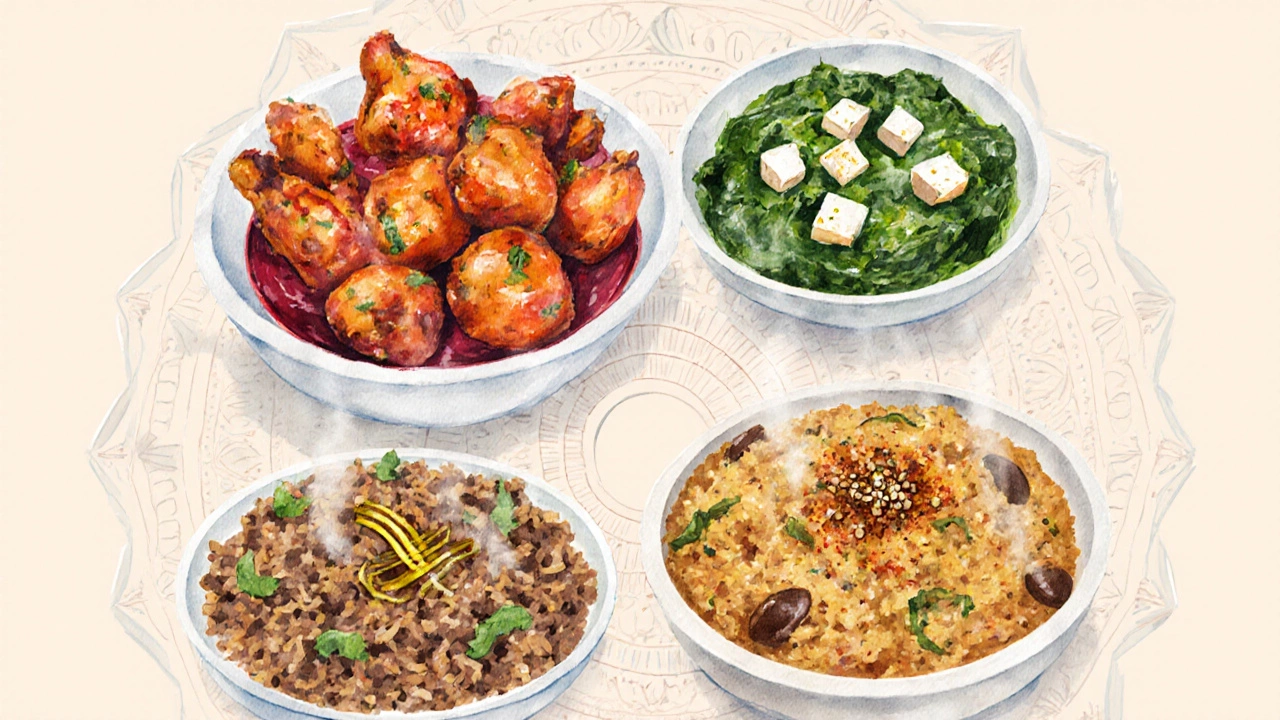
Tips for ordering healthy Indian food at restaurants
- Ask for grilled or tandoori prep: “Can I have the chicken tandoori instead of butter chicken?”
- Swap white rice for brown rice or ask for a smaller portion: Many places will accommodate.
- Request sauces on the side: This lets you control the amount of oil or cream.
- Load up on veggies: Ask for extra mixed vegetables in your curry or a side salad.
- Choose whole‑wheat roti over naan: Whole‑grain roti adds fiber and reduces calorie density.
- Mind the portion size: Restaurant servings can be generous; consider sharing or boxing half for later.
Common pitfalls to avoid
Even with a good menu, it’s easy to slip up:
- Heavy cream‑based sauces: Korma, butter chicken, and paneer tikka masala often hide a lot of saturated fat.
- Fried starters: Samosas, pakoras, and bhajis spike both calories and sodium.
- Excessive ghee or butter: A drizzle can add 100 kcal quickly.
- Over‑rich desserts: Gulab jamun and rasgulla are delicious but sugar‑laden.
Stick to the guidelines above, and you’ll still enjoy the taste without the guilt.
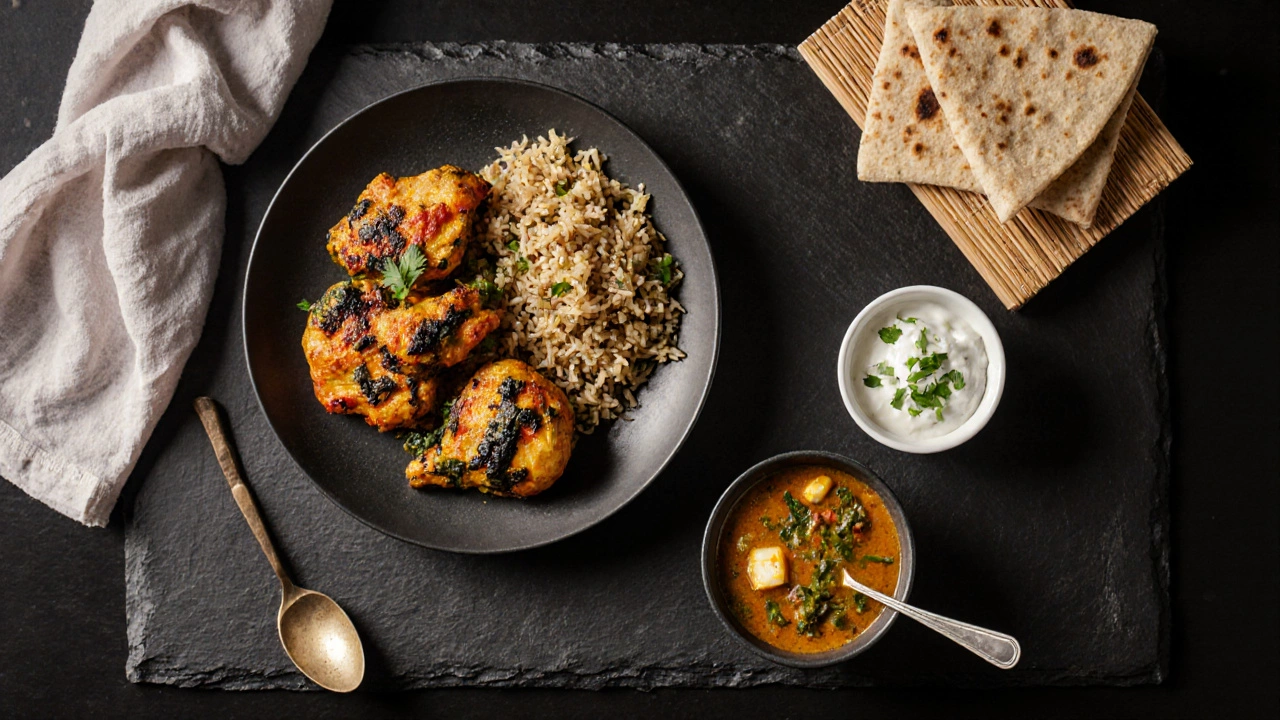
Quick cheat‑sheet checklist
- ✅ Choose grilled, baked, or steamed dishes.
- ✅ Prioritize protein‑rich options (chicken, lentils, paneer).
- ✅ Ask for whole‑grain carbs (brown rice, whole‑wheat roti).
- ✅ Load up on vegetables, limit fried starters.
- ✅ Request sauces on the side, limit cream/ghee.
- ✅ Control portion size - share or pack leftovers.
Frequently Asked Questions
Which Indian dish is lowest in calories?
A plain tandoori chicken breast (without skin) typically contains around 150 kcal per 100 g, making it one of the lightest main‑course options.
Can I enjoy Indian food if I’m vegan?
Absolutely. Stick to dal, chana masala, mixed vegetable biryani (made with oil instead of ghee), and roti. Ask the kitchen to skip butter or cream in any sauces.
Is naan ever a healthy choice?
Traditional naan is made with white flour and butter, so it’s higher in calories and low in fiber. A whole‑wheat roti is a healthier alternative for the same purpose.
How can I reduce sodium in a restaurant curry?
Request the sauce on the side and limit the amount you add. Opt for freshly prepared dishes rather than canned or pre‑made sauces, which often contain more salt.
What side dish pairs well with a healthy Indian main?
A small serving of cucumber raita (made with low‑fat yogurt) or a fresh salad with lemon dressing balances spice and adds extra protein and calcium.





